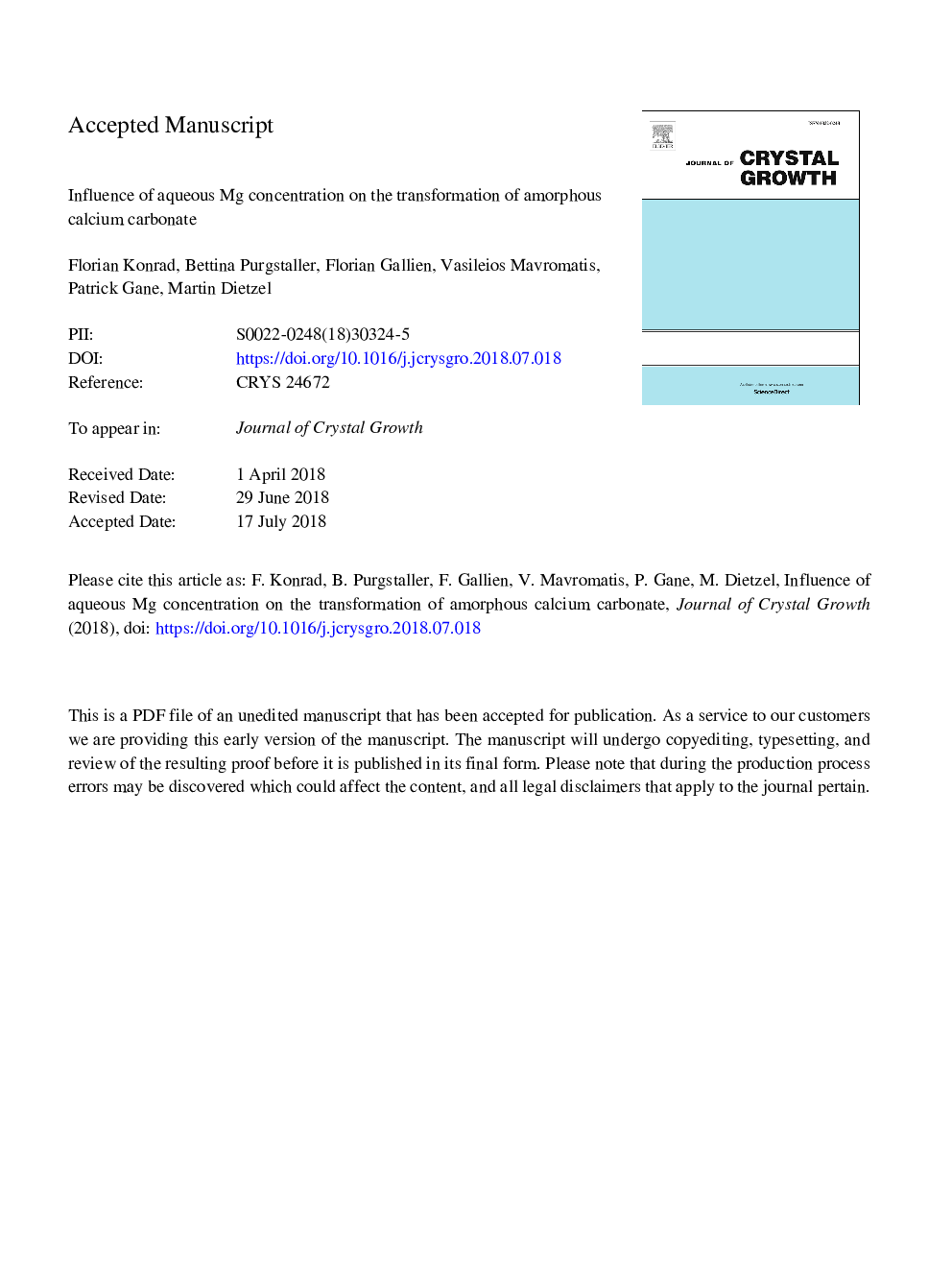| Article ID | Journal | Published Year | Pages | File Type |
|---|---|---|---|---|
| 8148478 | Journal of Crystal Growth | 2018 | 36 Pages |
Abstract
In natural aquatic environments amorphous calcium carbonate (ACC) shows a remarkable stability, which is assumed to arise from the incorporation of foreign ions as well as organic ligands. Such impurities, like Mg, are considered to be controlling the transformation of ACC and finally occurring CaCO3 polymorphs. Although transformation of ACC with different Mg contents is extensively studied, the role of the aqueous Mg on ACC transformation is still underexplored. Therefore, experiments on the transformation behaviour of additive-free ACC reacting with Mg-bearing solutions were carried out and monitored using highly time-resolved in-situ Raman spectroscopy. The results show that while ACC transformed instantly to calcite and vaterite in pure water, it exhibited a prolonged stability of up to 11.5â¯h at elevated Mg concentrations in the reactive solutions. During this process ACC incorporated up to 5â¯mol% of Mg. The subsequent, transformation pathway of the newly formed Mg-ACC changed from forming Mg-calcite and vaterite to precipitating aragonite with nesquehonite and monohydrocalcite as intermediate phases. This indicates that the distinct ACC transformation mechanisms and thus sequences of minerals formed are controlled by the aqueous Mg concentration of the reactive solution. Hence, the finally formed minerals are not determined by the pre-structuring of the original ACC.
Related Topics
Physical Sciences and Engineering
Physics and Astronomy
Condensed Matter Physics
Authors
Florian Konrad, Bettina Purgstaller, Florian Gallien, Vasileios Mavromatis, Patrick Gane, Martin Dietzel,
